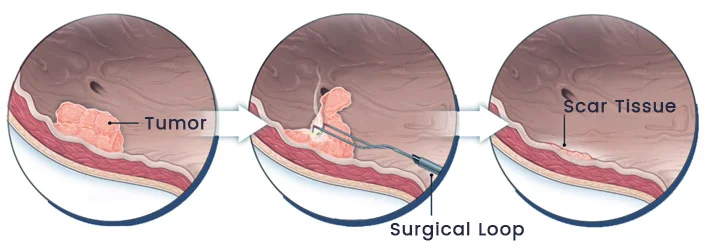Bladder Tumor Treatment Starts Here – Get Expert Surgical Help
Early Detection, Precise Removal – TURBT for Bladder Tumors
TURBT (transurethral removal of bladder tumour) Surgery in Ludhiana (Punjab)
Find the best treatment and TURBT (transurethral removal of bladder tumour) Surgery in Ludhiana at Aastha Kidney & Super Speciality Hospital, our experienced team of Oncourologist and specialists provides TURBT Diagnosis and Treatment at an affordable cost in Punjab.
Oncosurgery is slightly difficult, but with the minimally invasive operation, this problem has been reduced.
TURBT (transurethral removal of bladder tumour)
Oncourologist helps in treating the complex tumors related to the urinary system (bladder, urethra, and kidneys) along with male genital organs. The treatment is minimally invasive in which endoscopic operations are applied. If there is a need for hormonal therapy, chemotherapy, and targeted radiation therapy are also given.


What is the purpose of a TURBT?
A TURBT helps the urologist to identify different urinary as well as bladder conditions, and eventually manage them. Bladder cancer is the commonest sign for a TURBT. As per the bladder cancers report, almost 75 percent of these types of cancers are superficial in nature. In other words, most bladder cancers grow only on the bladder wall surface and not deep inside the bladder wall. It helps a surgeon to extract the tumor from the bladder down to the surface of the bladder wall without compromising the bladder’s deeper layers.
The details obtained by this operation may tell the physician of the sort of tumor or abnormality in the bladder, and the degree of which it is. This can then guide or assist your doctor in determining if additional treatment is required for your condition or not.
What are the growing consequences or symptoms of TURBT?
Well,it is common in almost every case of endoscopy of the urinary tract, when urinating for many days, there is sometimes burning and some mild discomfort. This is therefore normal for many days and maybe even 1-2 weeks to see a difference in the frequency of the urinary flux.
.
Bleeding during the treatment is also very normal. Most blood is left over from the operation in the early hours of the treatment, which eventually would stain the urine bright red. During this amount of time, tiny clots can also be formed and evacuated. This bleeding would usually stop within 2-3 days.
Additionally, having a little amount of repeated bleeding 1-2 weeks following their operation is very normal for a patient. This is usually a thin scab that is removed from the urinary tract 1-2 weeks following completion of the healing cycle. A significant degree of self-limited bleeding may be correlated with this.
When is the right time to take guidance from the doctor?
There are certain conditions in which, you need to seek medical advice or help from the physician including-:
A patient will notify their physician should they have a temperature of 101 degrees or higher, or if they start passing clots of more than 1 inch in diameter.
Many individuals may have cherry or red-colored urine, as described above, but will also have darker, burgundy-colored urine, and often gray, urine. Typically, the color of the urine is determined by how long a period has passed since the bleeding began.
Significant bleeding which requires further evaluation is usually associated with large clot passage.
Submit Your Phone Number for Contact

Aastha Kidney Hospital
Aastha Kidney & Super Speciality Hospital, founded by Dr. Neena Gupta and Dr. Sanjeev Gupta, is a leading multi-speciality hospital in Ludhiana.
Contact us
- +91 98534-70000
- +9198759-71408
- careaastha@gmail.com
- Registered Address: B-20-1197/1, Maya Nagar Road, Near Aarti Chowk, Krishna Nagar, Civil Lines, Ludhiana, Punjab 141001
Our Services
- 👨⚕️ Urology
- 🧬 Nephrology
- 🧑⚕️ Andrology
- 🩺 Laparoscopic Surgery
- 🫁 Pulmonology
- 🦴 Orthopaedics
